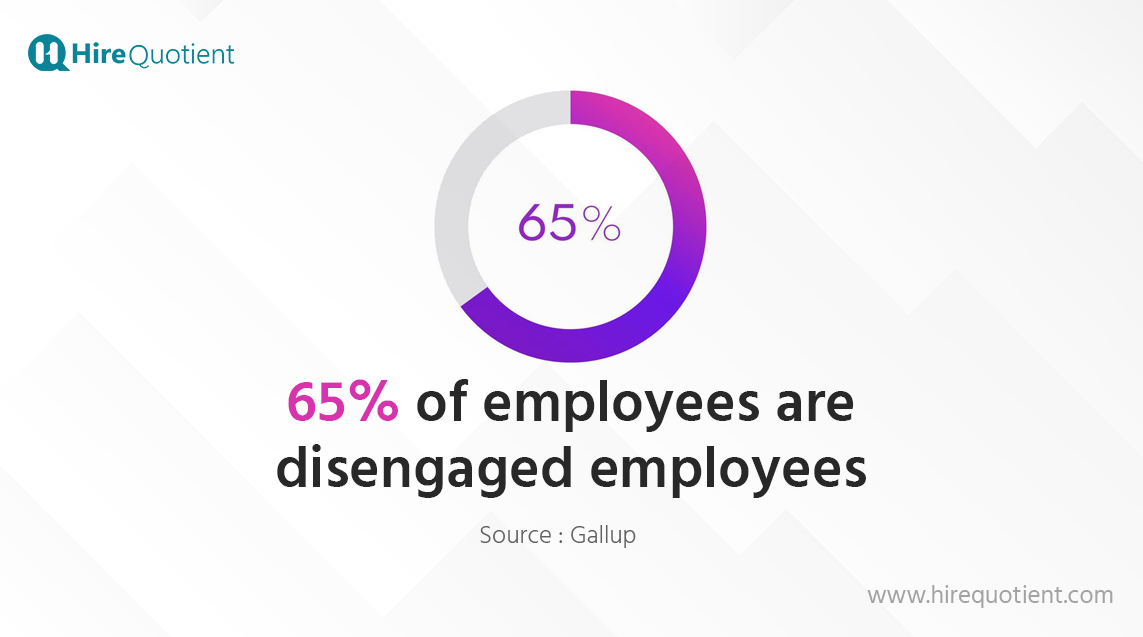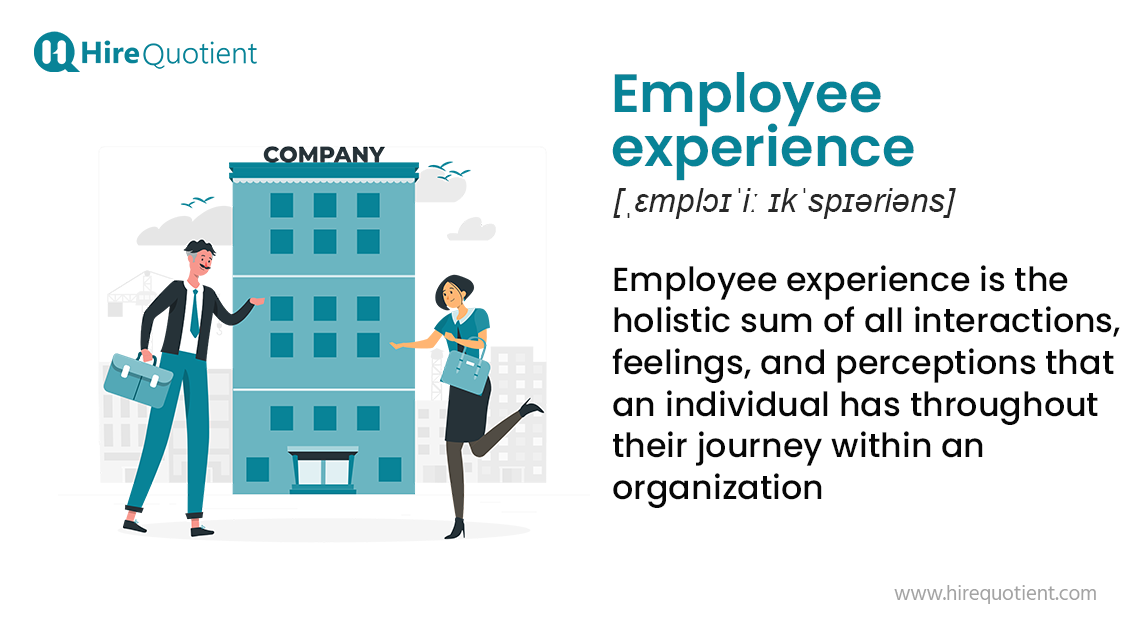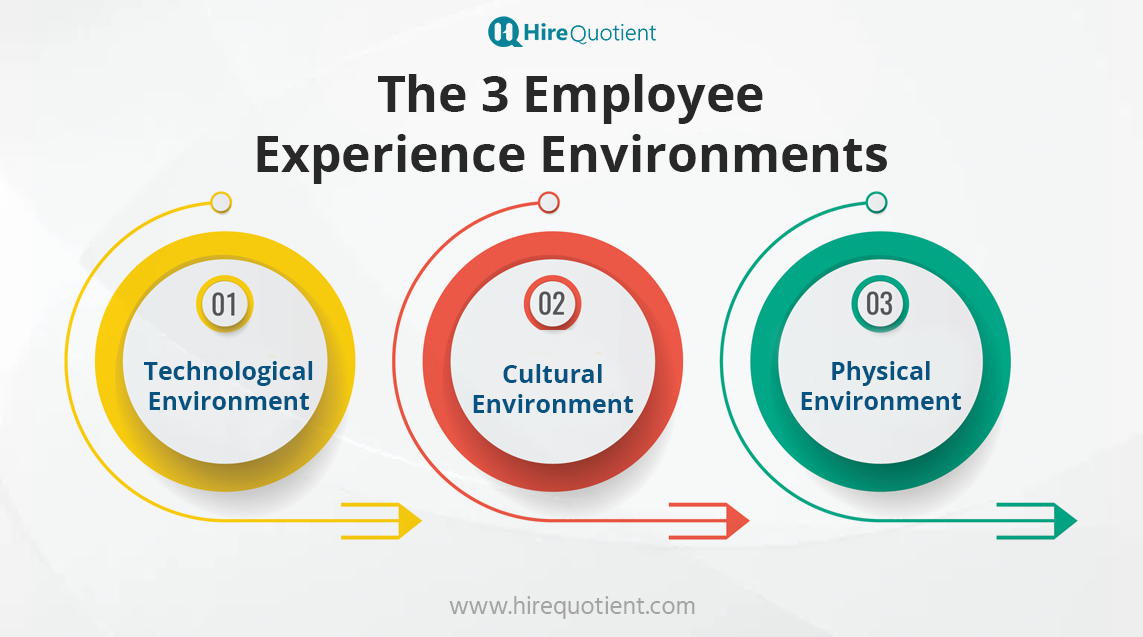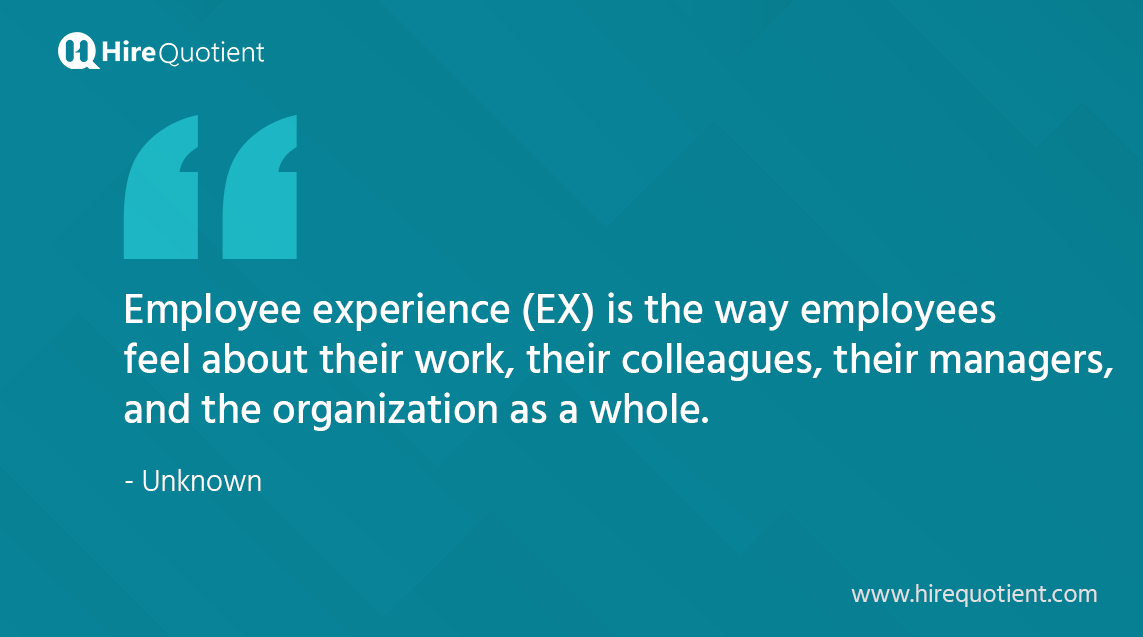Employee Experience
Employee experience is the holistic sum of all interactions, feelings, and perceptions that an individual has throughout their journey within an organization

This startling statistic serves as a sobering reminder of the pressing need for a transformative shift in the realm of human resources.
This means that your employees are not emotionally connected to their work, their colleagues, or their organization. They are less productive, more likely to leave, and less likely to recommend their company to others.
Employee Experience (EX) is more than just a buzzword; it's a strategic imperative. It encompasses every touchpoint, every interaction, and every emotion an employee encounters throughout their journey within a company. From the initial recruitment process to their daily work environment, from training and development opportunities to their exit interview – every aspect of the employee's life at work contributes to the overall experience.
This guide is for HR professionals who want to learn more about employee experience and how to create a positive EX in their organization. It covers the basics of EX, such as the different stages and the key factors that influence EX. It also provides practical tips for improving EX, such as conducting employee surveys, creating a positive work culture, and providing opportunities for development and growth.
What is Employee Experience? Employment Experience Definition

Employee Experience (EX) refers to the overall journey and interaction that an individual employee has with their employer throughout their entire tenure within an organization. It encompasses all aspects of an employee's engagement with the company, from the initial attraction to the organization (recruitment and onboarding) to their day-to-day work experiences, opportunities for growth and development, workplace culture, and ultimately, their departure or transition out of the organization.
In essence, employee experience encompasses the emotional, psychological, and physical aspects of an employee's relationship with their employer. It goes beyond traditional HR functions and involves creating an environment where employees feel valued, engaged, and motivated to contribute their best efforts.
Importance Of Employee Experience
A positive experience for employees is important for many reasons. It can:
- Increase productivity. Happy and engaged employees are more productive. A study by Gallup found that companies with engaged employees are 23% more profitable than those with disengaged employees.
- Improve customer service. When employees are happy and engaged, they are more likely to provide excellent customer service. This can lead to increased customer satisfaction and loyalty.
- Boost innovation. When employees feel valued and supported, they are more likely to be creative and innovative. This can lead to new products, services, and ways of doing things.
- Reduce turnover. A positive work culture can help to reduce turnover and save your company money. It's understandable why businesses with engaged staff have 59% lower employee turnover rates.
Advantages of Employee Experience
Investing in and prioritizing employee culture can bring a wide range of advantages to organizations. Here are some of the key benefits and advantages of an enhanced employee experience:
- Higher Employee Engagement: Engaged employees are more committed, motivated, and enthusiastic about their work. They are more likely to go the extra mile to contribute to the organization's success.
- Stronger Organizational Culture: A positive employee experience contributes to a strong and positive organizational culture, characterized by shared values, a sense of belonging, and a supportive atmosphere.
- Better Leadership and Management: When leaders and managers prioritize employee experience, they tend to be more effective in their roles, leading to better communication, coaching, and support for employees.
- Reduced Absenteeism: Engaged and satisfied employees are less likely to take unplanned absences, reducing absenteeism rates and ensuring a more consistent workforce.
- Adaptability and Resilience: Employees who have a positive experience at work are more adaptable and resilient in the face of change and challenges.
- Enhanced Employer Brand: Organizations known for providing a positive employee experience tend to have a better employer brand, making it easier to attract top talent and establish a positive reputation in the marketplace.
- Long-Term Organizational Success: Employee experience is not just a short-term focus; it contributes to an organization's long-term success by creating a sustainable, high-performing workforce.
The Three Environments of Experience of Employees
Jacob Morgan, in his book "The Employee Experience Advantage," introduces the concept of the "Three Environments" of employee experience. These environments are key components that collectively shape the overall employee experience within an organization. They are:

- Physical environment: This includes the physical space where employees work, such as the office, the tools and equipment they use, and the overall design of the space. The physical environment can have a big impact on employee productivity, satisfaction, and well-being.
- Cultural environment: This includes the values, beliefs, and norms that are shared by the organization. The cultural environment can influence how employees feel about their work, their colleagues, and the company as a whole.
- Technological environment: This includes the technology that employees use to do their jobs, such as computers, software, and mobile devices. The technological environment can affect how employees work, communicate, and collaborate.
How To Build A Positive Employee Experience?
Building a positive employee experience requires a holistic approach that considers various aspects of an employee's journey within the organization. Here are some tips to help you create a positive employee experience:
- Create a positive work culture: This means fostering a sense of community, providing opportunities for growth and development, and valuing employee feedback.
- Encourage employee engagement: This means giving employees a sense of ownership over their work, providing them with opportunities to contribute, and making them feel like they are part of something bigger than themselves.
- Provide fair and equitable treatment: This means ensuring that all employees are treated with respect, regardless of their background or demographics.
- Offer competitive compensation and benefits: This shows employees that their work is valued and appreciated.
- Invest in employee wellness: This includes providing access to health insurance, gyms, and other resources that promote physical and mental health.
- Give employees a voice: This means creating opportunities for employees to share their ideas and feedback and taking their concerns seriously.
- Listen to your employees: This means being open to feedback and taking steps to address any concerns that they may have.
- Be transparent and honest with your employees: This means keeping them informed about the company's finances, plans, and goals.
- Celebrate successes: This shows employees that their hard work is appreciated and that they are part of a team.
- Recognize and reward employees: This shows employees that their contributions are valued and that they are appreciated.
- Provide opportunities for growth and development: This helps employees feel challenged and motivated, and it can also lead to increased productivity and innovation.
- Promote diversity and inclusion: This creates a more welcoming and supportive work environment for all employees.
- Foster a sense of belonging: This means making employees feel like they are part of a team and that they are valued members of the organization.
Employee Experience Framework
Creating a comprehensive employee experience framework involves organizing the various components and strategies that contribute to a positive and engaging workplace environment. Below is a general framework that can serve as a guide for designing and implementing an effective employee experience program:
- Research and Analysis
- Conduct surveys, interviews, and data analysis to understand current employee perceptions and needs.
- Identify pain points, areas for improvement, and opportunities to enhance the employee experience.
- Define Objectives and Outcomes
- Clearly define the goals and desired outcomes of the employee experience program.
- Align these objectives with the organization's mission, values, and strategic priorities.
- Leadership Commitment
- Secure commitment and support from top leadership to ensure the program's success.
- Demonstrate leadership's commitment to fostering a positive employee experience.
- Design a Culture Blueprint
- Define and communicate the organization's desired culture, including values, behaviors, and cultural norms.
- Ensure alignment between the desired culture and the employee experience.
- Technology and Tools
- Provide employees with the necessary technology and tools to perform their roles effectively.
- Ensure that technology supports collaboration, communication, and remote work if applicable.
Employee Experience Stages
The employee experience stages are the different phases that an employee goes through during their time with an organization. These stages can be divided into two main categories:
- Pre-employment stages: These stages occur before the employee is officially hired by the organization. They include:
- Attraction: This is the stage where the organization attracts potential employees to their company. This can be done through advertising, networking, and other methods.
- Recruitment: This is the stage where the organization selects the best candidate for the job. This can involve interviews, assessments, and other screening methods.
- Onboarding: This is the stage where the new employee is introduced to the organization and their new role. This can include orientation, training, and other activities.
- Employment stages: These stages occur after the employee is officially hired by the organization. They include:
- Engagement: This is the stage where the employee is motivated and productive. This can be influenced by factors such as the work environment, the company culture, and the employee's relationship with their manager.
- Performance: This is the stage where the employee's work is evaluated. This can be done through performance reviews, goals, and other methods.
- Development: This is the stage where the employee is given opportunities to grow and develop their skills. This can be done through training, mentoring, and other methods.
- Retention: This is the stage where the employee is encouraged to stay with the organization. This can be influenced by factors such as compensation, benefits, and the work-life balance.
- Exit: This is the stage where the employee leaves the organization. This can be voluntary or involuntary.
Types Of Employee Experience Surveys
Employee experience surveys are a valuable tool for organizations to gather feedback, assess engagement, and make data-driven decisions to improve the workplace. There are various types of employee experience surveys, each serving a specific purpose. Here are some common types:
- Employee Life Cycle Surveys
- Performance Management Survey
- Performance Appraisal Survey
- 360 Degree Feedback Surveys
- Employee Onboarding Surveys
- Exit Surveys
Employee Experience Examples

The best employee experience companies include:
- Google is known for its focus on employee well-being and development. The company offers a variety of perks and benefits, including on-site gyms, laundry facilities, and massage services. Google also encourages its employees to take time off and recharge, with unlimited vacation days and a generous parental leave policy.
- Zappos is another company that puts a lot of emphasis on employee happiness. The company's mission statement is "to provide the best customer service possible," and it starts with its own employees. Zappos offers a variety of training programs and opportunities for employees to grow and develop. The company also has a strong culture of communication and collaboration.
- Netflix is known for its flat organizational structure and its commitment to giving employees a lot of freedom and autonomy. The company also offers a variety of perks and benefits, such as on-site childcare, pet insurance, and sabbaticals. Netflix believes that happy employees are more productive employees, and it invests accordingly.
- HubSpot is a company that is known for its innovative culture. The company encourages its employees to experiment and take risks. HubSpot also offers a variety of perks and benefits, such as free snacks, on-site massages, and a generous parental leave policy.
- Atlassian is a company that is known for its focus on employee satisfaction. The company offers a variety of perks and benefits, such as unlimited vacation days, a generous parental leave policy, and on-site gyms. Atlassian also has a strong culture of collaboration and innovation.
Employee Experience Trends
The employee experience (EX) trends for 2023 are focused on creating a more flexible, inclusive, and human-centered workplace. Here are some of the top trends to watch:
- Hybrid work: The hybrid work model is here to stay, and employers need to find ways to make it work for everyone. This includes providing employees with the flexibility they need to work from home or the office, as well as the tools and resources they need to be successful.
- Wellness and mental health: Employees are increasingly prioritizing their well-being, and employers need to offer programs and resources to support them. This includes providing access to mental health care, offering flexible work arrangements, and creating a culture of wellness.
- Diversity, equity, and inclusion (DE&I): DE&I is no longer a nice-to-have, it's a business imperative. Employers need to create a workplace where everyone feels welcome, valued, and respected. This includes investing in unconscious bias training, creating inclusive hiring practices, and promoting diversity at all levels of the organization.
- Employee engagement: Engaged employees are more productive, more loyal, and less likely to leave. Employers need to find ways to keep their employees engaged, such as providing opportunities for growth and development, giving them a voice in decision-making, and celebrating their successes.
- Employee feedback: Employees have a lot to say about their experiences at work, and employers need to listen. This includes collecting feedback regularly, using it to make improvements, and communicating the results back to employees.
Employee Experience Best Practices
Here are some employee experience best practices that businesses can adopt to create a positive and rewarding work environment for their employees:
- Start with a strong employee value proposition (EVP): The EVP is a statement that defines what an organization offers its employees in terms of compensation, benefits, culture, and opportunities. A strong EVP can help organizations attract and retain top talent.
- Create a culture of belonging: A culture of belonging is one where everyone feels welcome, valued, and respected. This includes creating an inclusive workplace where everyone feels like they can be themselves.
- Empower employees: Employees want to feel like they have a voice and that their contributions matter. Empower employees by giving them autonomy, responsibility, and the resources they need to be successful.
- Invest in employee development: Employees want to grow and develop their skills. Invest in employee development by providing training and development opportunities, both formal and informal.
- Celebrate successes: Employees want to feel appreciated and recognized for their hard work. Celebrate successes by regularly acknowledging employee accomplishments.
- Listen to employee feedback: Employees have a lot to say about their experiences at work. Listen to employee feedback by collecting it regularly and using it to make improvements.
- Be transparent: Employees want to be kept in the loop about what's going on in the company. Be transparent by communicating openly and honestly with employees.
Employee Experience Technology
Employee experience technology (or EX technology) is a term used to describe the use of technology to improve the employee experience. This can include a variety of technologies, such as:
- Hiring and onboarding software: This software can be used to automate the hiring process, streamline onboarding, and provide employees with access to resources and information.
- Performance management software: This software can be used to track employee performance, provide feedback, and set goals.
- Learning management systems (LMS): These systems can be used to deliver training and development programs to employees.
- Communication tools: These tools can be used to improve communication between employees, managers, and other stakeholders.
- Collaboration tools: These tools can be used to facilitate collaboration between employees, regardless of their location.
- Wellness and mental health apps: These apps can be used to provide employees with access to resources and support for their physical and mental health.
- Employee engagement platforms: These platforms can be used to collect employee feedback, measure employee engagement, and identify areas for improvement.
Conclusion
As HR professionals, your role is pivotal in championing the employee experience within your organization. By fostering a culture of trust, communication, and continuous improvement, you can attract and retain top talent, enhance productivity, and drive innovation. The evolving trends in employee experience, such as remote work, well-being initiatives, and diversity and inclusion efforts, demand adaptability and innovation from HR teams.
Remember that the journey to improving the employee experience is ongoing. It requires a commitment to listening to your employees, acting on their feedback, and embracing change when needed. By doing so, you can create an environment where employees feel valued, motivated, and inspired to contribute their best efforts.